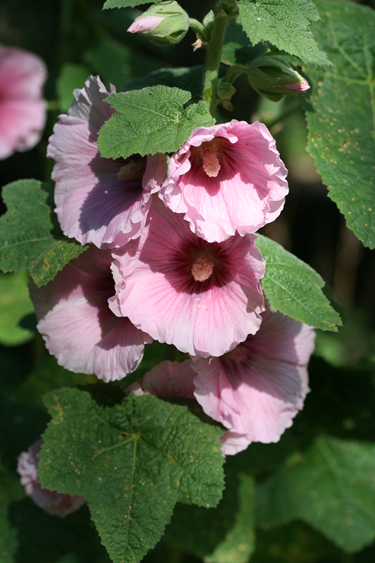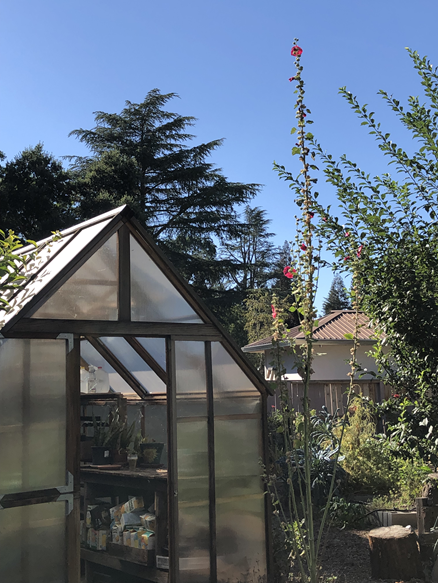Hollyhocks and four-o'clocks can make the time right in a garden

There are lots of beautiful new flowers and plants that are promoted each year to the gardener by various vendors and gardening magazines. We all get taken in by these potential new contributions to our gardens whether they be roses, dahlias or hibiscus among many others. However, there are still many classics that be can enjoyed too.
One of these that I have enjoyed since childhood is the hollyhock Alcea rosea. I grew up on a dairy farm and we had a milk house that was separate from the barn. Hence, at each milking, I had to carry buckets of milk from the barn to the milk house, rain, snow, or shine, where the milk was filtered into milk cans. Around the milk house, we always had some hollyhocks growing.
Hollyhocks are a biennial or perennial plant with a variety of colors ranging from black, to deep red, red, pink, yellow and white. They are also quite a seed producer. Each blossom produces a pod full of round, flat large seeds. They will seed themselves and grow everywhere if you aren’t careful about controlling the seed pods.
Recently, I had one grow to an enormous height and I wanted to find out if I had a record. Well, my hollyhock looked to be about 14 feet tall, but it measured only 12 feet, not anywhere near a record. The world’s record was set in 2021 by one in Israel that was 24 feet, 2 inches. The previous record set in 1978 in England was 19 feet, 7 inches. I was disappointed, but at 12 feet mine is still pretty awesome.
Hollyhocks have a long history and are well traveled. The plant is thought to be originally native to East Asia, but made its way to the Middle East where the English encountered them during the Crusades and brought them to England and they similarly arrived in southern Europe. The plant was used to make a salve to treat the hind leg injuries of horses or horse hocks. Hence the combination of Holy Land and horse hock treatment provided the name Hollyhock.

Hollyhocks are a great addition to cottage gardens in the back of the border as against a fence or building which may offer some protection and support. They grow under a variety of soils and conditions from part shade to full sun, attract bees and hummingbirds, and provide color.
The only thing to avoid is poorly drained water-logged soil which is hardly ever a problem in California.
Another old-fashioned plant is four-o'clock (Mirabilis jalapa). It is a perennial in the Central Valley but in colder climates is grown as an annual. It is a tropical native to the Andes area of South America and was discovered in 1540 by Spaniards after conquests. It was also grown by Native Americans for medicinal purposes. At my old homestead, there was a group of white ones that had been planted long before I arrived and they were still blooming 42 years later when I left. I also planted a few colorful ones in my garden border.
It got the name because it blooms late in the day and it blooms from summer through the fall. It prefers full sun but can do fine in part shade and does fine in a variety of soils. Flowers are trumpet-shaped about 2 inches in length with blooms in colors of white, pink, purple, red, and yellow that grow on erect to trailing green stems. Bi-color flowers are common, such as a white or yellow flower with red markings on the throat. They may be pollinated by sphinx moths and other nocturnal pollinators with long tongues. Hummingbirds and butterflies are also attracted to the flowers.
They are right at home in a cottage garden or in borders and beds. They can also be added to large containers. If placed along a lighted walkway, the night-blooming flowers and fragrance can be well appreciated. They can be started from seed or plants can be purchased at your local nursery. If starting from seed the seeds soaked overnight will aid germination. Happy gardening with old favorites and sorry to say I only covered two today.
If you have a gardening-related question you can contact the UC Master Gardeners at 209-953-6112. More information can be found on our website: http://sjmastergardeners.ucanr.edu/CONTACT_US/
This article originally appeared on The Record: Plant Hollyhocks and four-o'clock to spruce up your garden
